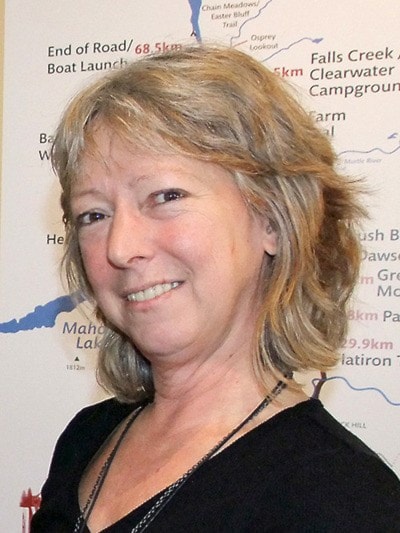A recent decision by the B.C. government to expand its list of “qualifying agricultural uses” to include birch and maple sap or syrup is an important breakthrough, according to Sharon Neufeld.
“The good news is you can now include it on a small holding for tax purposes,” she said.
Neufeld has long been an advocate for non-timber forest products in the North Thompson Valley.
The new rules will provide more flexibility for producers to meet the requirements to maintain farm status for taxation purposes for local smallholders, she explained.
The change will mean people will be able to count any money made from selling birch sap or birch syrup as farm income, which in turn can be used to qualify their property as farmland, with its favorable tax rates.
Neufeld typically taps between 20 to 40 birch trees each spring. She markets the birch sap as it comes from the tree, rather than making syrup from it. The sap makes a tasty spring tonic, she said, especially if it is mixed with blueberry or saskatoon juice.
“It helps to cleanse the winter sludge from your system,” she said, “and it’s made with all wild products.”
Neufeld said she knows of at least one other family in the area that harvests birch sap.
They use it to make delicious wine and beer, she said.
The Upper Clearwater resident’s comments about the government’s decision were echoed by Ted Traer of Moose Meadows Farm near Quesnel.
“We’re excited that this new change will recognize the efforts of these diversified farm producers,” said Traer, a mixed farmer and birch syrup producer. “After all, syrup-making is truly Canadian, just like Mounties, moose, snowshoes and hockey.”
A registered professional forester, Traer was one of the speakers during a non-timber forest products workshop held in Clearwater in 2010.
Birch syrup is not as sweet as maple syrup and is reputed to have a more caramel-like flavor.
It is primarily produced in the Cariboo region. Maple syrup is produced in B.C. using the sap of the big-leaf maple, which mostly grows on Vancouver Island and in some regions of coastal mainland.
“Building the local market for B.C. foods is a key component of government’s plan to lead the agrifoods sector growth into a $14-billion-a-year industry by 2017,” said Minister of Agriculture Norm Letnick. “The passion for local foods in B.C. has never been stronger, and new, innovative products such as these support government’s clear commitment to build local demand and support for B.C. foods.”
Birch sap is very healthy and may contain minerals such as calcium, magnesium, potassium, zinc, iron, and vitamin A. It has been consumed for centuries as a health drink in numerous countries.
A birch tree will produce an average of four litres of sap per tree per day over the season. Sap starts to flow once the ground thaws and temperatures are above freezing.
The production of birch syrup is very labour intensive. While traditional maple syrup takes approximately 40 litres of sap to produce one litre of syrup, it takes 80-120 litres of sap to produce the equivalent in birch syrup.
